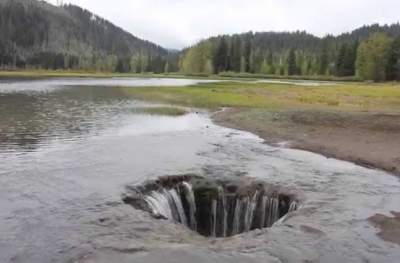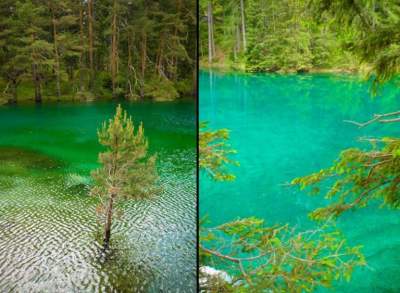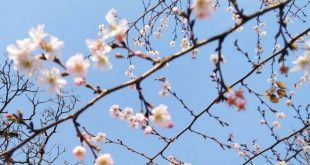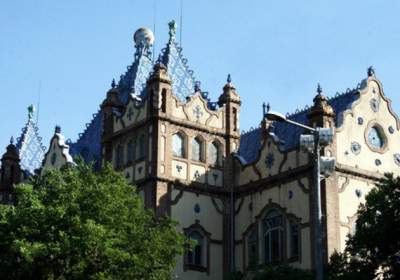 This is one of the most interesting countries of Europe.
This is one of the most interesting countries of Europe.
Hungary may not have access to the sea, but it boasts some amazing features, as well as some of the most striking architectural sights you’ll ever see.
Get comfortable, because we’re going on a virtual tour of this amazing country!
10. “Wheel of time” (Timewheel), Budapest
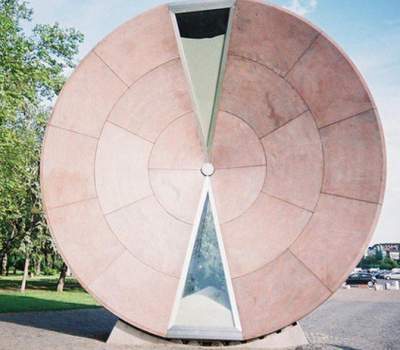
Budapest’s “Wheel of time” (“Időkerék” in Hungarian) is perhaps the world’s largest hourglass, which need a whole year to sand leaked out completely!
Literally a giant wheel, designed to count the time, it was built in 2004 in honor of inclusion of Hungary in the European Union.
Time is ticking tiny pieces of glass that seep down using a computerized system, whereby the calculation time is made with surprising accuracy.
Every year, on 31 December, a team of four people with thick steel cables turns the “Wheel of time” by 180 degrees, dumping a chronological reading in one year. Even with the help of several assistants the process of rotation of the wheel takes half to 45 minutes.
The installation is located in a public Park and anyone can come and try to turn this huge granite wheel.
9. Floating home on lake Bokod, Oroszlany (Oroszlány)
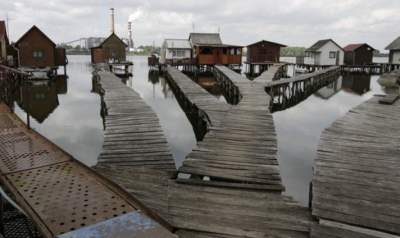
It is, in fact, a whole village built on the surface of the lake. What’s amazing about this place — the lake never freezes, even if the rest of the lake around covered with a layer of ice.
Lake Bokod, 50 miles (80,47 km) from Budapest, you can see houses built on stilts, extended in a line more than one mile (1,61 km). Small houses are mainly used by locals during the summer season, however they are also suitable for anglers who love to fish all year round, which are used in their favor interesting feature of this lake: in spite of the cold Hungarian winter, it freezes very rarely.
This is due to the plant located near the lake. In fact, lake Bokod is nothing but a cooling pool for a power plant. The water continually circulates: cold water comes to the station, and the warm water from it pours out — this prevents surface water from fully freezing.
8. Museum Flipper (Flipper Muzeum), Budapest
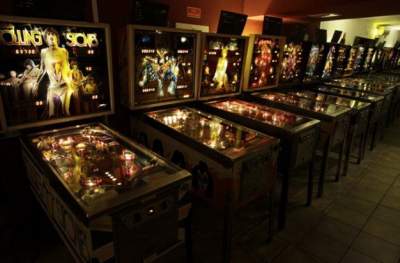
In museums, as a rule, interesting, but not very fun. This Museum is both interesting and fun at the same time, because in the Museum of pinball slots there are some the world’s rarest instances.
A Museum dedicated to classic pinball is located in the basement of a house located in the city centre, and is a Paradise for fans of this game.
Based once the a pair of enthusiasts, a small Museum can boast of a whole series of classic slot machines, each of which is in working condition and is waiting for the moment to empty the pockets of visitors. By purchasing a ticket to the Museum, visitors will have the opportunity to play pinball during the day as much as anyone.
7. The Statue Is Colombo (Columbo Statue), Budapest
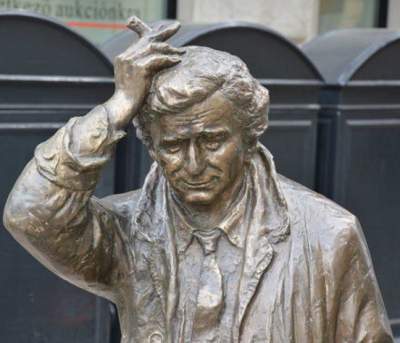
Why in the center of Hungary there is a statue of Peter Falk? Probably because he was deep Hungarian roots.
Due to a slight family connection to the Budapest street Falk Miksa Street is now home to a bronze life-size statue of Peter Falk, one of the most beloved tongued detectives in a rumpled coat — Colombo.
Established in 2014 at an estimated cost of 63 thousand dollars, a bronze statue was part of an overall project to rejuvenate the area, though why was chosen precisely this figure remains a mystery.
According to the organizers, the actor Peter Falk may have had a relationship with a Hungarian politician of the XIX century by max Falk (Falk Miksa), in whose honor and named a street, although they also recognize that this relationship remains to be proven.
American Falk, is said to have had Hungarian roots, but was never linked by kinship with the family of max Falk.
6. Radio Tower Lakihegy (Lakihegy Radio Tower), Szigetszentmiklós (Szigetszentmiklós)
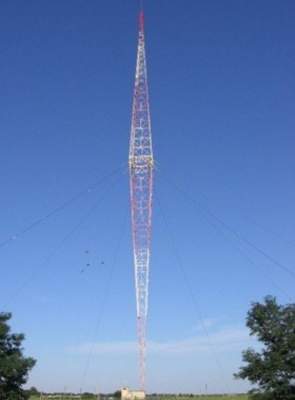
Visit the radio tower is an event not for everyone, but if it will help, Lakihegy is the world’s tallest radio tower in the form of cigars.
In 1933, when Veszprém was built the radio tower Lakihegy, it became the tallest man-made structure in Europe, reaching a height of 314 meters. The tower, which still remains the tallest man-made object in Hungary, is famous not only for its height but also cigar-shaped form.
Today the tower is used as a backup transmitter, signal transmission radio control on and off of street lamps and other devices operating at frequencies 135,6 kHz. It is also used as a training station for advanced training of specialists.
5. Vajdahunyad Castle (Vajdahunyad Castle) In Budapest
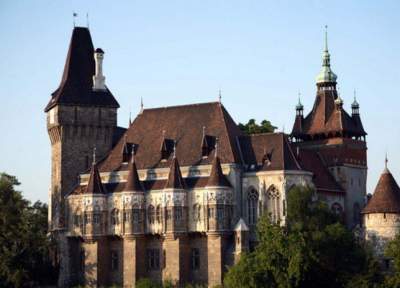
Once this castle was built entirely of wood and cardboard. Fortunately, as long as Vajdahunyad has become increasingly popular, it has undergone an amazing transformation stone.
Combining four different architectural style, Vajdahunyad castle is a completely unique tribute to a millennial architectural traditions of Hungary.
Designed by architect Ignác Alprom (Ignác Alpár) in 1896 in celebration of the Millennium of Hungary (commemorating a thousand years since, in the plains of Pannonia for the first time settled the medieval Magyars), the Vajdahunyad Castle was originally intended as a temporary exhibition, and was constructed of wood and cardboard. However, this place has attracted such a large number of locals and tourists, which by 1904 had built a permanent structure.
Located on an artificial island in the center of Budapest a short distance from the national monument of Hungary, Vajdahunyad castle, however, is a surprising contrast of its magnificent surroundings.
4. “Shoes on the Danube promenade”, Budapest
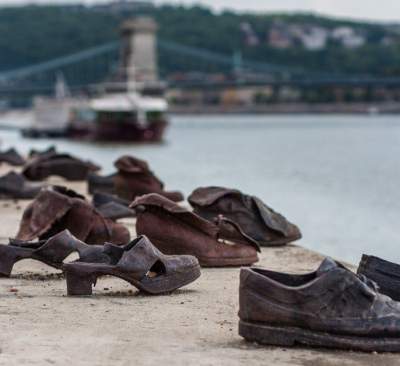
This unusual monument is dedicated to the thousands executed along this river during the Second world war. A good reminder of the terrible times that should never be repeated.
In October 1944, Hitler overthrew the leader of the Hungarian government, Miklos Horthy (Horthy Miklos), and in his place was appointed Ferenc Salashi (Ferenc Szalasi).
Salashi, whose fascist ideology was close to Hitler, brutally and publicly terrorized Jews in Budapest, beating and killing them. About 80,000 Jews were deported from Hungary in a death March to the Austrian border, and almost 20,000 Jews were brutally shot along the banks of the Danube.
Victims under the threat of arms forced to remove shoes (during the Second world war the shoes were a valuable commodity) and to face his executioners before they were brutally shot, falling over the edge, where they were carried away by the current of freezing water.
Shoes on the Danube promenade is the eternal memory of that horrendous period of history, created by Director Ken Tagem (Can Togay) and sculptor Gyula Power (Gyula Pauer). Established in 2005 along the banks of the Danube in Budapest, the monument consists of 60 pairs of shoes times 1940-ies, the real size and shape made of iron.
3. Kelenföld Power Station (Kelenföld Power Station), Budapest
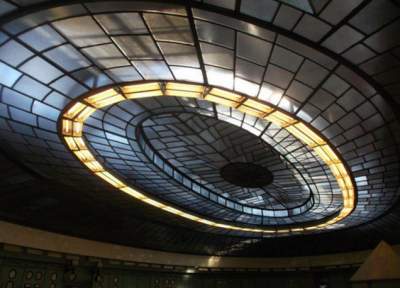
Perhaps this taste is not for everyone, but this beautiful abandoned power plant tours. Technological marvel a century ago, it now offers an excellent glimpse into the industrial design of the past.
At the time of its opening in 1914, the Kelenföld power plant was one of the most advanced energy centers in all of Europe, but it is probably better remember for its rich architecture and art Deco than as a technological marvel.
Designed and built pair of architects who obviously bet on the appearance of the plant, despite its industrial setting, the historic Central part is protected by the law of Hungary, protecting it from demolition.
The power plant provided electricity to Budapest until 2007, after which the older part of the station was closed and ownership was transferred to private holdings.
Now that the plant is no longer used, the current owners occasionally open its doors for guided tours.
2. Budapest cave Church, Budapest
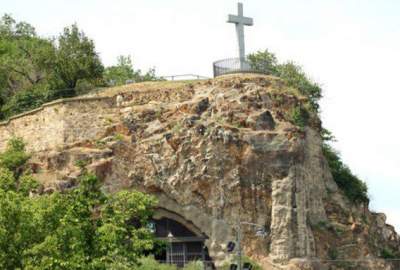
Today being a rather tourist Shrine, administered by the monks, this cave was once home to monk-alchemist, who lived here secretly.
A small cave carved into the hill Gellert (Gellert Hill), located on the Western part of the Hungarian capital. Currently, it is run by monks of the Pauline.
In 1951 the Communist government of Hungary was arrested and accused all paulinskill the order of treason. The chief monk was executed, others were sent to labor camps, and the Church was surrounded by a concrete wall with a height of almost 2.5 meters.
In 1989, after the fall of the Communist regime in Hungary, the wall was destroyed, and the cave re-opened. Today, all cave walls are made of concrete and “artificial rocks”, but the little Church still retains a curious feature.
1. The building of the Hungarian geological Institute (Hungarian Geological Institute), Budapest
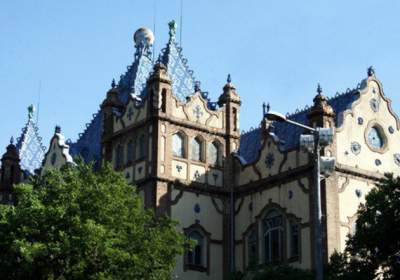
If an amazing roof in the art Nouveau style draws your attention, then nothing will attract. This hidden gem is in the art Nouveau style was created by the architect, who was in search of a national style.
In the late nineteenth century the Hungarian geological society has decided to move to a new building, but in that era of nationalism was not any building. To create what was needed, they hired an architect who decided to create something completely unique in the Hungarian architectural style.
Officially opened in 1899, the building, erected by order of the society (now the Hungarian geological Institute), was designed by Hungarian architect Eden Lechner (Ödön Lechner).
Studied architecture in Hungary, and in Berlin and Paris, Lehner became the founder of Hungarian art direction art Nouveau, known as Szecesszió (art Nouveau), characterized by the use of colorful ceramics and the inclusion of modern trends, floral motifs and Oriental design details and elements of Hungarian folk art.
Most of the most interesting works Lehner, nicknamed the “Hungarian gaudí”, actually preceded the world-famous attractions of the Catalan architect (a few years).
The Institute building is one of the most striking examples in the field of “art Nouveau”, most noticeable at a glance thanks to its turquoise-blue tiled roof.
The building still houses the Hungarian geological Institute, the oldest research Institute in the country. In addition, the building is the Geological Museum of Budapest (Geological Museum of Budapest), which boasts the country’s largest geological collection of 23 thematic collections with more than 180,000 of fossils, minerals, rocks and photos.


